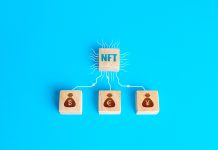For many folks, the concept of trading from home is associated with selling products on an online auction platform such as eBay. This is certainly a viable proposition, given the large and growing presence of conventional ‘trading’ on eBay, Alibaba and others sites. However, if you don’t have an assembly line, or a limitless supply of products to sell, eBay is not a sustainable way of earning a living for many people. Fortunately, market-savvy individuals have learned a trick or two about trading financial assets. There are multiple categories of trading assets available today, including currencies, commodities, indices and stocks.
Conventional wisdom states that you would go to a broker, buy a futures contract, stock or currency and wait for it to appreciate/depreciate accordingly. Unfortunately, there are many flaws in this thinking. For starters, trading is not about investing. They are entirely different words, verbs and actions. Trading is defined as, ‘Frequent buying and selling of underlying assets to generate superior returns than holding the investment.’ Investing by contrast is buying and holding financial assets over a prolonged period of time with reinvestment, compounding and dividend growth.’ Time is one fundamental difference between trading and investing, but it’s much deeper than that.
Direction of Price Movement
A trader is not interested in holding assets for the sake of holding assets. A trader is interested in generating returns without any encumbrances. Traders spot opportunities and act quickly to generate profits. Investors are not interested in the cyclical movements of stocks, commodities, indices or currency pairs. They hold for the long term seeking appreciation. ‘As a trader, your turnover of cash is going to be incredibly high. That’s why it’s important to choose trades with short-term expiry times in the form of call or put options,’ says 24Option trading expert Michael Divinuto Sr.
When you trade, it doesn’t matter whether the asset appreciates or depreciates – what matters is that you call it correctly. Traders often short stocks, or go long on stocks. With derivative trading options like CFDs, the only thing that matters is that you get the direction of price movement correct. The actual profits that are generated are dependent on the size of the price movement and the volume of the asset that is traded. Fortunately, the Internet of things has made it possible to access a smorgasbord of trading options from the comforts of home. Conventional brokers are often eschewed by the modern-day trader. For starters, not only do they levy high fees, commissions and charges on opening accounts, trading and maintaining accounts, there are also broker fees to contend with.
Understanding Interaction Between Macroeconomic Variables
To obviate such blatant charges, home-based traders are switching to regulated brokers with contrarian investment options. These include the option to place call or put options on underlying assets without taking ownership of those assets. As a day trader, scalper or casual trader, derivatives trading serves a useful function in your financial portfolio. Investments are important, but contrarian revenue streams can also be used to boost a financial portfolio.
With options trading, it is possible to profit off your understanding of the financial markets. When interest rates rise, certain things happen in the economy. The cost of credit increases, but it also benefits those with savings in the bank. Likewise, when the oil price rises, this has an inflationary effect which benefits financial markets to a degree. It’s important to understand the broader interrelationships between these macroeconomic variables because it can help you as a home-based online trader.
Find a Home-Based Business to Start-Up >>> Hundreds of Business Listings.

















































